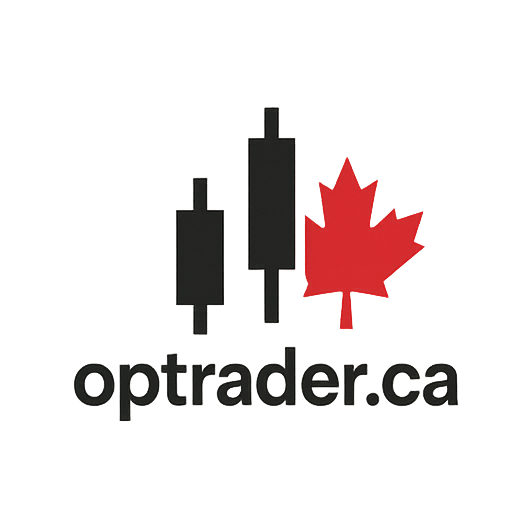How to Customize Optrader’s Options Screener
Most traders don’t have a trade problem — they have a filter problem. A good options screener doesn’t just find opportunities; it removes noise so you only see trades that fit your risk, timeframe, and liquidity needs. Here’s how to tune your screener for Canadian markets (TSX) to increase win rate and make your ROO more consistent.
🔎 1) Liquidity First: Volume, OI, and Spread
- Minimum Open Interest: Start at ≥ 100 contracts (per strike you trade). Raise to 250+ for weeklies.
- Daily Volume: Prefer strikes with active prints that session; set a floor like ≥ 20–50 contracts.
- Bid/Ask Spread: Cap at ≤ 5–8% of mid-price (or a fixed max of $0.10–$0.20 for lower-priced options).
Why it matters: Tight spreads and real depth improve fills, make rolling easier, and keep your realized ROO close to the screen.
📈 2) ROO That Annualizes (Without Fantasy)
- Call ROO % (covered calls): Filter for a realistic band, e.g., 0.8–2.5% per month on blue chips.
- Put ROO % (CSPs): Similar target band; adjust up for higher IV names but keep liquidity strict.
- Reality check: Screen on mid-price but expect fills slightly below; keep a “slippage” mental haircut of 5–10% on premium.
🌪️ 3) Volatility Guardrails
- IV Level: Exclude extremes (e.g., IV% <= 85 for calls on TSX). High IV looks juicy but eats attention and increases gap risk.
- Historical Volatility: Cap at ≤ 50% for steadier names; loosen only if you have bandwidth.
- IV Skew: Favor strikes where call IV is not abnormally discounted vs. puts (for covered calls).
🎯 4) Delta & DTE: The Risk Dial
- Covered Calls: Target Δ 0.20–0.35 with 21–45 DTE for balanced ROO vs. assignment risk.
- Cash-Secured Puts: Target Δ 0.15–0.30 with 21–45 DTE for cleaner entries.
- Weekly vs. Monthly: Monthlies = tighter spreads & smoother rolls. Only use weeklies with strict OI/spread rules.
📅 5) Earnings, Dividends, & Events
- Earnings filter: Exclude tickers with earnings within ±30 days of expiry unless it’s a deliberate play.
- Ex-div dates: Covered calls near ex-div risk early assignment. Screen for upcoming dividends and plan rolls.
- News sensitivity: Trim position size on high-beta names during macro or sector events.
🧱 6) Technical Confirmations (Keep It Simple)
- Trend filter: Price above 20/50 EMA for covered calls; below for CSPs if you’re comfortable owning a dip.
- MACD/Stoch: Use as tie-breakers, not gatekeepers. Avoid fights against strong momentum into your strike.
🧩 7) Diversification Controls
- Issuer cap: ≤ 10–15% of equity per name.
- Sector cap: ≤ 30–35% per sector to avoid single-theme drawdowns.
- High-IV budget: Treat one high-IV name as two regular positions in your capacity count.
⚙️ 8) Presets You Can Reuse
- Income–Monthly: OI ≥100, spread ≤8%, Δ 0.20–0.35, DTE 21–45, ROO 0.8–2.5%/mo, exclude earnings.
- Defensive–Blue Chip: OI ≥250, spread ≤5%, HV ≤35%, Δ 0.15–0.25, sector cap 25%.
- Tactical–Event Light: OI ≥300, spread ≤5%, DTE 7–21, alerts on IV spikes; size at half normal.
🗓️ 9) A Simple Weekly Workflow
- Sunday: Run preset → shortlist → remove earnings risks → tag roll plans.
- Mon–Thu: Enter staged orders near the mid; don’t chase wide spreads.
- Fri AM: Review rolls/closures; avoid last-minute panic fills in thin TSX weeklies.
🧠 Final Tip
Document your thresholds (OI, spread, Δ, DTE, ROO) and apply them consistently. Most edge comes from discipline, not magic filters. If a trade doesn’t meet your rules, it’s not “the one”—it’s noise.
⚠️ Education only, not investment advice. Brokerage policies and market conditions change—confirm details before trading.
